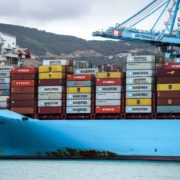Kenya

[vc_row][vc_column width=”1/4″][penci_fancy_heading _text_align=”left” subtitle_pos=”below” title=”Kenya” block_id=”penci_fancy_heading-1606378067905″ subtitle=”The Republic of Kenya”][/penci_fancy_heading][vc_single_image image=”907″ img_size=”full” alignment=”right”][/vc_column][vc_column width=”3/4″][vc_single_image image=”901″ img_size=”full” alignment=”center”][/vc_column][/vc_row][vc_row][vc_column][vc_tta_accordion active_section=”1″][vc_tta_section title=”About Country” tab_id=”1606378244618-d498c6fc-9579″][penci_text_block block_title_align=”style-title-left”]The Republic of Kenya borders the Indian Ocean to the southeast, Tanzania to the south, Uganda to the west, Sudan to the northwest, Ethiopia to the north, and Somalia to the northeast. Lake Victoria is shared between Uganda, Tanzania, and Kenya.
Private sector-led economic growth in Kenya since the early 2000s. The Government’s business-friendly stance has rolled over into Vision 2030, which sets development benchmarks for a number of priority sectors. This has been complemented by the integration of the EAC and the establishment in 2005 of a customs union and a common market (2010).
Kenya has seen an upward trend in economic development to a record of 5% as at December 2010 with prospects looking up due to extensive economic reforms, a new constitution, and fundamental reforms in the three arms of government (executive, legislature and the judiciary)
The main sectors contributing to economic growth are building and construction, infrastructure development, manufacturing, transport and services, and tourism particularly from emerging markets; agriculture, and wholesale and retail.
Source: KenInvest[/penci_text_block][/vc_tta_section][vc_tta_section title=”Basic Data” tab_id=”1606378244643-1dc430f8-494d”][penci_text_block block_title_align=”style-title-left” custom_markup_1=””]GEOGRAPHY
AreaTotal: 580,367 sqkm
Land: 569,140 sqkm
Water: 11,227 sqkm
Climate varies from tropical along coast to arid in interior
Natural Resources: limestone, soda ash, salt, gemstones, fluorspar, zinc, diatomite, gypsum, wildlife, hydropower
Population: 48.4 million (July 2018 est.)
Population Growth: 1.57% (2018 est.)
Language: English (official), Kiswahili (official), Kiswahili numerous indigenous languages
ECONOMY
GDP (Purchasing Power Parity): $163.7 billion (2017 est.)
GDP per capita (Purchasing Power Parity): $3,500 (2017 est.)
Exports: $5.792 billion (2017 est.)
Imports: $15.99 billion (2017 est.)[/penci_text_block][/vc_tta_section][vc_tta_section title=”Economic Structure” tab_id=”1606378359930-a8e1f014-90fd”][penci_text_block block_title_align=”style-title-left”]
Kenya has had considerable growth in the past few years with average growth rate of over 5 percent. As of 2016, Gross Domestic Product (GDP) stood at USD 70.53 billion with per capita income of USD 1,587. Kenya’s Economy is distinguished from most African countries by the fact that it is one of the most diversified and advanced.
Key sectors of the economy include agriculture, manufacturing, real estate and services. Although agriculture remains the mainstay of the economy at 30 per cent of GDP, manufacturing’s share of GDP has been rising significantly over the years. At 10 per cent, manufacturing is the second-largest contributor to GDP, with the processing of agricultural products a key factor in growth.
Kenya operates a liberal economy which promotes trade and investment.
The country has, abolished price and exchange controls. The Government has also instituted measures to sustain macro-economic stability such as prudent fiscal and monetary policies, improvements in economic governance, and privatization of some public enterprises. These policies continue to promote growth by providing a more secure environment for private sector investment decisions.
Kenya guarantees capital repatriation and remittance of dividends and interest to foreign investors, who are free to convert and repatriate profits
Private enterprises, both foreign and domestic, can freely establish, acquire, and dispose of business enterprises according to the Companies Act. The Constitution of Kenya provides protection against the expropriation of private property. Only permitted subject to the payment of prompt and fair compensation
[/penci_text_block][/vc_tta_section][vc_tta_section title=”FDI Inflows” tab_id=”1606378364115-2c015edd-cfad”][penci_text_block block_title_align=”style-title-left”]
Source : The World Bank Group[/penci_text_block][/vc_tta_section][vc_tta_section title=”Kenya Investment Authority (KenInvest)” tab_id=”1606378805883-fb94cae0-4160″][penci_text_block block_title_align=”style-title-left”]
Kenya Investment Authority (KenInvest) is a statutory body established in 2004 through an Act of Parliament (Investment Promotion Act of 2004) with the main objective of promoting investments in Kenya. It is responsible for facilitating the implementation of new investment projects, providing After Care services for existing investments, as well as organizing investment promotion activities both locally and internationally. The core functions of KenInvest include; Policy Advocacy; Investment Promotion; Investment Facilitation; Investor Tracking and After Care Services. The activities are carried out through the following departments:
KenInvest will strive to continuously provide quality services on a wide array of areas to investors. These include:
Pre-investment Services
-
- Issuance of Investment Certificate, that facilitates immediate start of a business.
- Assistance in obtaining any necessary licenses and permits.
- Assisting in obtaining incentives or exemptions under the Income Tax Act, the Customs and Excise Act, the Value Added Tax Act or other legislation
- Providing information to investors on the business climate, operating rules investment opportunities, sources of capital,…
- Liaison with other government agencies for the issuance of additional licenses and approvals not directly handled by the Authority.
Post – Investment Services
- Provision of After Care services.Continuous.
- liaison with other stakeholders who interface with investors in their day-to-day operations with an ultimate aim of improving the investment environment and to make it easier to do business.
[/penci_text_block][/vc_tta_section][vc_tta_section title=”Why Invest in Kenya” tab_id=”1606378888340-6eb9827c-536e”][penci_text_block block_title_align=”style-title-left” custom_markup_1=””]
Kenya is the largest and most advanced economy in East and Central Africa. Its GDP accounts for more than 50 per cent of the region’s total and in terms of current market prices, its 2014 GDP stood at $58.1 billion.
Kenya’s strong growth prospects are supported by an emerging middle class and an increasing appetite for high-value good and services.
Social Environment
As of 2016, Kenya had a population of 48.46 million with an annual growth rate estimated at 2.7 per cent. The country is experiencing growing consumer demand of high end products and services bolstered by growing middle class and rising trend towards.
Kenya’s membership to regional economic blocs coupled with her strategic geographic position makes the country the gateway to the huge East African Community (EAC) market with over 135 million people and the Common Market for Eastern and Southern Africa (COMESA) market with over 450 million people. Kenya is a beneficiary of several trade preferential arrangements which includes The African Growth and Opportunities Act (AGOA) and Economic Partnership Agreement (EPA) which gives duty free access to the EU among others
Education System
Education System in Kenya comprises of early childhood or pre-primary education, primary education, secondary education, university education and technical education.
Others are special education, non-formal education and adult education. The philosophy, vision, mission and the goals of education are focused towards life-skills and life-long learning.
Kenya has more than 73,000 public and private educational institutions and 12.692 million pupils and students as at 2009 – 1.9 million in pre-primary institutions, 8.8 million in primary schools, 163,340 in non-formal schools, and 1.5 million in secondary schools. In teacher training colleges, the student enrollment stands at 26,324, technical institutions have 71,513 students and universities 177,735.
Salaries and Wages
Typical salary ranges applied by the private sector are listed in the table below.
For certain occupations, the government, as required by the Labour Institutions Act, 2007, publishes the Regulation of Wages Order, setting out minimum wages. Investors tend to add a premium of 20 percent to these.
| Position | Unit | Value | Year | |
|---|---|---|---|---|
| Senior manager | USD | 1350 – 1680 | 2015 | per month |
| Middle manager | USD | 500 – 670 | 2015 | per month |
| Graduate entry | USD | 270 – 440 | 2015 | per month |
| Skilled technician | USD | 330 | 2015 | per month |
| Shop assistant | USD | 200 – 270 | 2015 | per month |
| Office assistant | USD | 170 – 200 | 2015 | per month |
| Security guard | USD | 115 – 126 | 2015 | per month |
| Driver | USD | 140 – 260 | 2015 | per month |
| Unskilled labourer | USD | 135 | 2015 | per month |
[/penci_text_block][/vc_tta_section][vc_tta_section title=”Useful Links” tab_id=”1606379085245-09416c5f-d136″][penci_text_block block_title_align=”style-title-left”]
- Central Bank of Kenya : www.centralbank.go.ke
- Communications Commission of Kenya : www.cck.go.ke
- Ministry of Agriculture : www.mfa.go.ke
- Ministry of Planning and National Development : www.planning.go.ke
- Kenya Revenue Authority : www.revenue.go.ke
- African Merchant Assurance Company (AMACO): www.amaco.co.ke
- APA Insurance Company: www.apainsurance.org
- Apollo Life Assurance Company: www.apollo.co.ke
- British American Insurance Company: www.britak.co.ke/
- Cannon Assurance Company: www.cannonassurance.com
- Capex Life Assurance Company Limited: www.capexlifeassurance.co.ke
- Chartis Kenya Insurance Company: www.chartisinsurance.com
- Co-operative Insurance Company: www.cic.co.ke
- Fidelity Shield Insurance Company: www.fidelityshield.com
- First Assurance Company: www.firstassurance.co.ke
- Gateway: www.gateway-insurance.co.ke
- Geminia Insurance Company: www.geminia.co.ke
- GA Insurance Company: www.gakenya.com
- Insurance Company of East Africa (ICEA): www.icea.co.ke
- Kenya Orient Insurance Company: www.korient.co.ke
- Lion of Kenya Insurance Company: www.lionofkenya.com
- Madison Insurance Company: www.madison.co.ke
- Mercantile Insurance Company: www.mercantile.co.ke
- Metropolitan Life Insurance Kenya Ltd.: www.metropolitan.co.ke
- Old Mutual Life Assurance Company: www.oldmutualkenya.com
- Pan Africa Life Assurance Company: www.panafrica.co.ke
- Pacis Insurance Company Ltd: www.paciskenya.com
- Real Insurance Company : www.realinsurance.co.ke
- Tausi Assurance Company: www.tausiassurance.com
- UAP Insurance Company : www.uapkenya.com
[/penci_text_block][/vc_tta_section][vc_tta_section title=”Contact us” tab_id=”1606379088276-2ee3a5ba-7439″][penci_text_block block_title_align=”style-title-left”]
Tel : (+254) 730 104 200 | Fax : (+257) (20) 22 43 862
www.investmentkenya.com | info@investmentkenya.com
[/penci_text_block][/vc_tta_section][/vc_tta_accordion][/vc_column][/vc_row]





